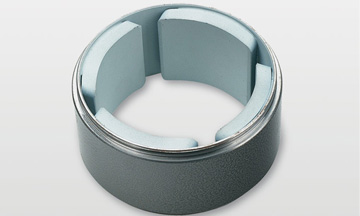Structural Bonding Acrylics

About the product
Hitlock structural acrylic adhesives are suitable for bonding a wide variety of materials. The rapid, room-temperature cure coupled with high strength and durability make these adhesives ideal for demanding applications where speed and ease of application of the adhesive is important. Acrylic adhesives are mainly used for high load transmission to replace common mechanical joining methods. Two parts bonded with such an adhesive could be considered as structurally linked. Mechanical characteristics like high strength, high modulus and high adhesion have proven to be effective for customer applications.
Hitlock structural acrylic adhesives are suitable for a variety of applications.
They are ideal for structural bonding of metals, composites, plastics, glass, wood and other materials. Hitlock’s structural acrylic adhesives have excellent durability. They
resist tensile, peel, cleavage, and impact forces as well as resisting the stresses of differential thermal expansion found when bonding dissimilar materials. They are formulated with resistance in mind, so are suitable for applications that involve exposure to oils, greases, moisture and weathering.
Typical applications include:
- Magnet bonding (particularly for electric motors)
- Composite Assemblies
- Rear view mirror attachment
- Can be used for substrates such as PVC, Polycarbonate, Acrylic, Fiberglass, PBT, PPO, ABS, FRT, Polyurethane, Epoxy, Wood, RIM, Nylon, FRP, Polyesters, Gelcoats, Styrene, Stainless Steel, Aluminum, Carbon Steel, Galvanized Steel,
Benefits of Structural Bonding Acrylics
- Extrememly high strength bonds increase design possibilities. At the same time simplifies construction by increasing strength/rigidity for load transmission
- Excellent durability to impact, peel, shear, and thermal expansion increases part life.
- Room temperature cure eliminates ovens and other equipment.
- Rapid cure increases daily output to reduce production costs.
- Bond a wide variety of substrates to increase design freedom.
- Prevents material fatigue and failure by achieving uniform transmission of loads (stress distribution) and by maintaining the structural integrity (no thermal or mechanical weakening of parts)
- Saves production costs by replacing conventional mechanical fasteners (screws, rivets or welding)\
- Saves material cost and saves weight by reducing material thickness while maintaining load transmission characteristics
Product Chemistry / Techology: Anaerobic, Methyl Methacrylates